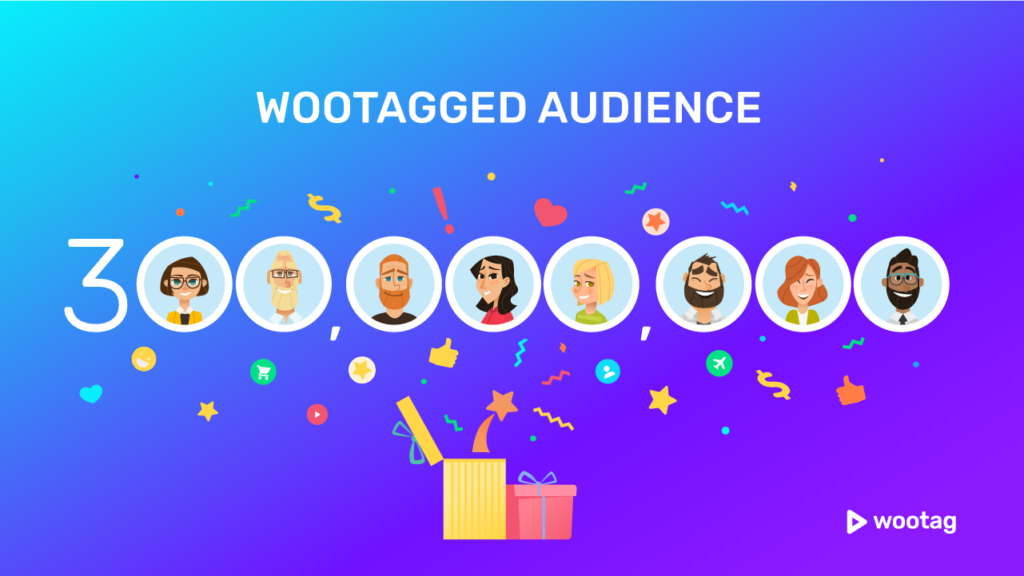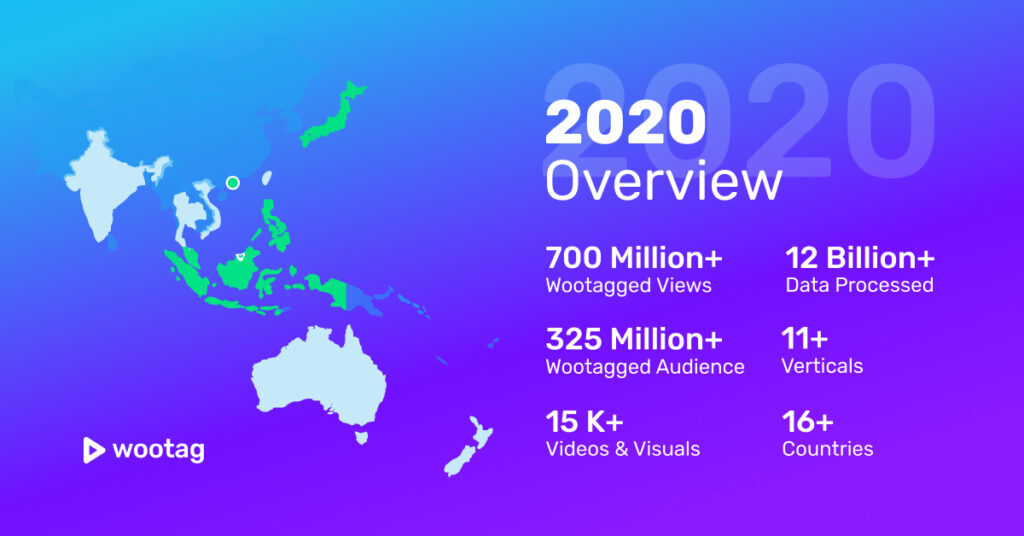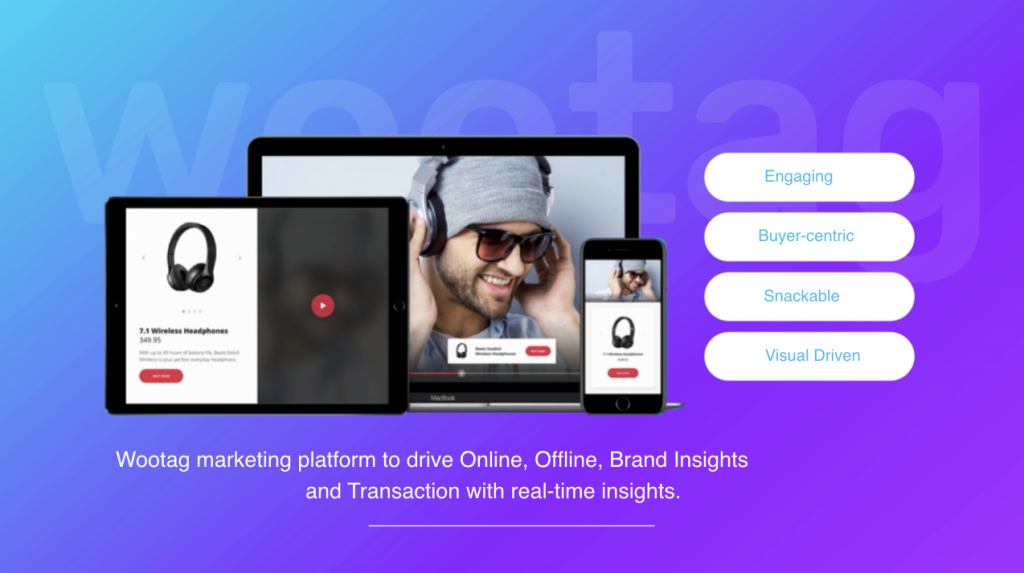Even the greatest products need a little help to get the word out. When Apple releases their next big thing, you get often get a huge conference followed by a beautiful video telling you why you need their product. Whenever you hear of a successful Kickstarter project, there almost always is a video accompanying the crowd-funding project.
Virtually no brand or company is exempt from the influence of video in this day and age, and words alone are simply not enough as we move towards a medium that caters to both our visual and auditory needs to create a powerful impression.
Let’s take a look at Evian’s 2013 ad campaign ’Baby & Me’, where adults suddenly learned what it was to be youthful again. Launched mid 2013, the video has garnered over 100 million views on Youtube to date. Imagine a company selling something as basic as water just got you to think about them, even if it’s for just a minute, and have people share it too. That‘s any marketer or startup’s dream.
Now imagine that same campaign without a video, but only with print advertisements such as the one below. Not quite the same now, is it?
There’s no denying videos have immense influence and power over their audience, and whether you are in marketing or just promoting your product or startup, a strong video is almost always a necessity to get the word out. And people are beginning to realize this.
In the years to come, this trend is only going to grow more rapidly. But in case you aren’t quite convinced as to why you should jump on this bandwagon just yet, here are just a few reasons to change your mind.
Because almost every successful marketing campaign that has gone viral all started with a video
Do a quick search on viral marketing campaigns and take a look at any websites. Notice a common trend? Chances are, nearly all of them are represented with a strong and compelling video.
It’s almost a certainty that any campaign that went viral was almost always built on the foundation of a great video. Videos are easily shared, fun to watch, and are possibly the best stepping stone to get people interested in your product or brand. While the cost of creating a video can exceed that of creating a poster campaign, the potential gains are significant enough to make people want to try.
Because analytics just got a whole lot better
Now this might be stretching the truth a little bit. Current analytics available on some mainstream video sites aren’t quite up to par when it comes to comprehensive analytics, but these sites provide users with basic information such as page views and retention rates so you can use them as rough guides to better understand your audience.
The beauty comes when more advanced tools from third-party video sites are used. For example, Wootag comes with in-depth analytics that allows you to analyze and properly segment your target audience. Learn everything you need to know about how your videos are viewed, where they are viewed, which aspects of your videos they get excited about with in-built technology like heat-mapping and more.
Considering videos still take significant time and effort to brainstorm and create, proper analytics helps to justify the cost by letting you evaluate the return on investments.
Because videos play perfectly to human emotions and are easily remembered.
Everyone loves a good story. There is just something about seeing a person on screen that connects us on a more human level and let’s us build trust. When we feel we are connected to these people, any message the video tries to convey suddenly becomes more real with the help of ‘eye contact’ as we are driven on a more emotional level than a logical one, making it almost the perfect way to convince your audience about your product.
According to Psychologist Susan Weinschenck, there are four reasons we are innately attracted to video. She believes we are hardwired to want to pay attention to people’s faces, draw more information from hearing someone’s voice over just reading words, become more easily influenced due to the volatile state of emotions , and pay more attention to it because of the movement in video.
Because two of the three most popular sites in the world are huge video viewing platforms
A quick search on the most popular websites around the world shows Google, Facebook and Youtube consistently dominating the charts. Looking past the need for a search engine to be the default homepage for most, you can see just how dominant videos are on the Internet.
While Youtube may hold the largest database of videos from around the world, Facebook has recently overtaken YouTube on total number of video views in the world. And in 2017, it is estimated 70% of the world’s bandwidth will be the result of streaming videos. There just isn’t any other way to say it, videos are and will be an integral part of the Internet for years to come.
Timing is no longer an issue. Your videos can be watched again and again and again
Many years ago, advertisers will carefully research and pay a significant sum to air their advertisement during the commercials of a particular television show, based on its demographics. While still done today, with events like the Super Bowl and World Cup commanding huge audiences, the internet has allowed for greater segmentation for more niche audiences and has opened the floodgates to more targeted advertising.
With people spending increasingly more time on their phones, tablets and PCs rather than watching what’s on the telly, there really isn’t any reason not to put your videos online for people to watch and share at all times of the day. Advertisers no longer have to cross their fingers and hope their target audience doesn’t run away from the TV during the commercial break. And with videos now online and permanently accessible, it opens the gateway to two-way communication for better branding and good public relations.
Internet speeds are getting faster and more people are consuming content on their mobile devices
In the age of the 56k modem, videos probably would have never taken off and this article redundant. It would have simply taken too long to buffer a video before it could be played. But with the average Internet speed constantly on the rise and fast connection speeds ubiquitous in any developed society, streaming content has become the norm.
Companies like Netflix structure their business model entirely around the concept of streaming videos online, and the FCC has also reclassified the definition of broadband to 25mbps, up from just 4mbps. In light of all these changes, it’s no surprise that faster internet speeds have led to higher video consumption rates and has been the driving force behind people sharing videos to others, with a large proportion of videos coming from mobile platforms like mobile phones and tablets.
In fact, video streaming is starting to make up such a high proportion of Internet bandwidth that Internet Service Providers recently tried, albeit unsuccessfully, to charge content providers more money for users to stream content without being throttled.
Honestly, there is a ton of data out there that supports the effectiveness of videos. Whether it’s a higher conversion rate for new product or newsletter sign ups, or increased sales after watching a video, there is simply no denying this is a trend that is only going to get bigger in the coming years. Just ask Volvo how they enjoyed their 31% increase in truck sales with their epic Jean-Claude Van Damme Split.
Everyone is making videos now. The real question is, why aren’t you?





